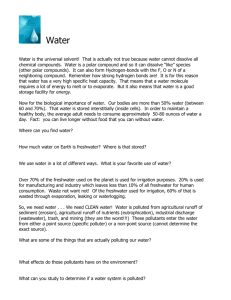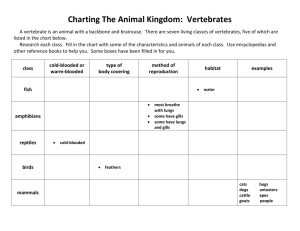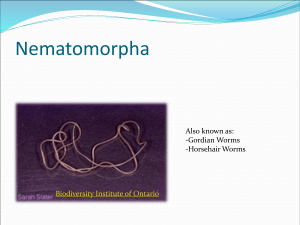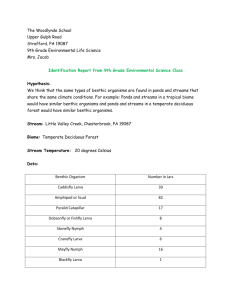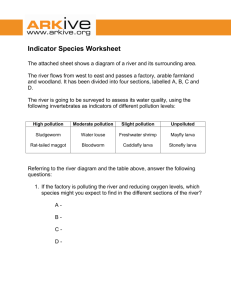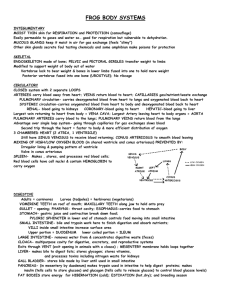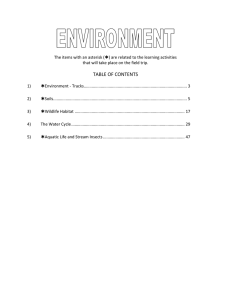Aquatic Insects: Why do we care? Indicators of aquatic health
advertisement
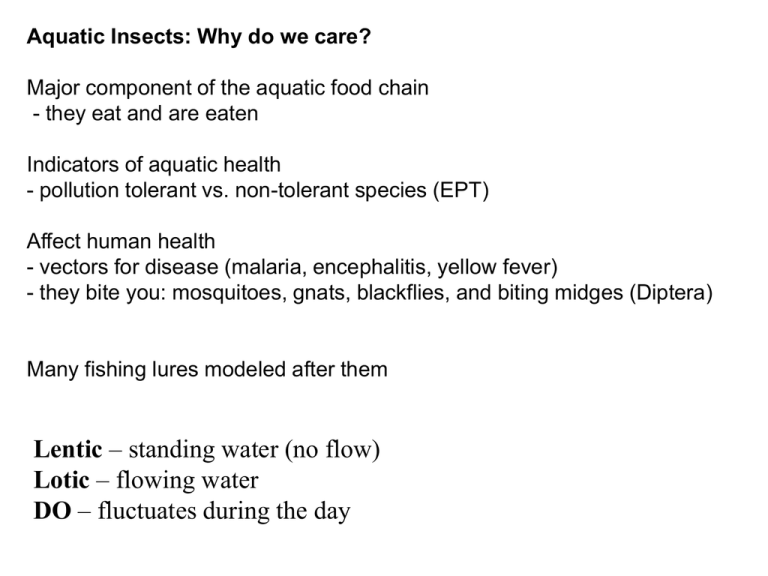
Aquatic Insects: Why do we care? Major component of the aquatic food chain - they eat and are eaten Indicators of aquatic health - pollution tolerant vs. non-tolerant species (EPT) Affect human health - vectors for disease (malaria, encephalitis, yellow fever) - they bite you: mosquitoes, gnats, blackflies, and biting midges (Diptera) Many fishing lures modeled after them Lentic – standing water (no flow) Lotic – flowing water DO – fluctuates during the day How do aquatic insects deal with different O2 and flowing environments? (2 types of breathing methods) Aeropneustic – get their oxygen from the atmosphere -must keep in contact with the air -or take it with them, making repeated trips -have ‘hydrofuge hairs’ that trap air bubbles -tiny hairs provide surface area for bubbles to attach to, forming a thin film of air called the plastron – allows insects to breath from the air bubble -Coleoptera, Hemiptera -the advantage of periodic contact breathing is that it allows the insect to dive and swim around Hydropnuestic – use oxygen dissolved in the water -cutaneous respiration (Diptera, Plecoptera) -occurs when the cuticle is thin enough for air to diffuse directly in and out for the insect -allows an insect to remain underwater indefinitely -Tracheal gills -lamellate – flat (Ephemeroptera, Odonata) -filamentous (Megaloptera, Plecoptera) Odanata have gills within their abdomens and pump oxygenated water to their gills through the anus. Can also propel themselves by quickly jetting the water back out. They move fast!!! What about dealing with flowing water? Lotic insects have morphological features to stay put - suckers (Diptera), hooks (Trichoptera, Megaloptera) - small, flat bodies - sticky secretions - build cases (Trichoptera) Orders you may encounter Ephemeroptera (mayflies) Eggs – larva – subimage - adult Larva – elongate, 3 filaments (tail), can have 2 Lamellate gills along abdomen Well developed legs Perpendicular wings on adults Plecoptera (stoneflies) •Same life cycle as mayflies •Have 2 filaments •No lamellate gills along abdomen •Some have filamentous gills •Adult wings are flat •Mostly shredders and grazers Trichoptera (caddisflies) •Have anal prolegs with hook •Less visible antennae •Only order that makes cases •Adult wings down- very hairy Odonata (dragonflies, damselflies) •Eggs –larva –teneral adult - adult •Predacious •No external gills •Longer body on damselflies (wings up) •Dragonflies (wings down) Diptera (midges, mosquitoes, gnats, flies) •Elongate body •Segmented body •Most species rich order (includes Chironomidae) •Adults have one pair of wings •Very diverse morphology Hemiptera (true bugs) •Egg – nymph larva –adult •Predacious “beak” •Wing pads •If wings develop they fold over each other Coleoptera (beetles) •Egg – larva –pupa – adult •Larva very different from adult •Adults – have hard case on body that does not overlap •Adults have chewing mouthparts •Larva –undeveloped eyes, sometimes have tusks Megaloptera (alder flies, dobsonflies) • Mouth has large, chewing pinchers (predacious) • Abdomen has strand-like appendages extending from each side • Three pairs of segmented legs on middle section of body with tiny pinchers at the end of each • Each segment contains filaments for respiration • Abdomen ends with two elongated appendages or prolegs

